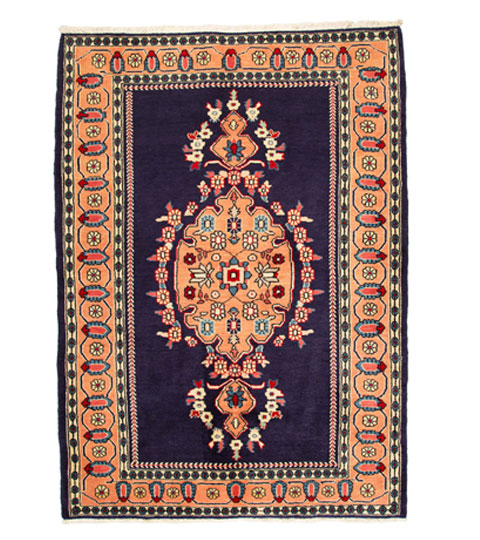One and a half
handmade rugs
One of the features of Iranian handmade carpets, especially the one
and a half handmade carpets, is its variety. Carpets made by Lur nomads, Baluchi
and Turkmen tribes are quite different in style, color and design.
Carpet weaving is done all over the country. All provinces knit and woven
carpets according to their style and taste. But some provinces are more popular
in this regard, such as East Azerbaijan, Isfahan, Fars, Markazi, Yazd, Khorasan
Razavi and South Khorasan.
One of the important reasons for this is the large variety of hand-woven carpets
and half-carpets, for example the color combination and pattern used in the
carpet. Another important reason may be the way we choose fabric weaving whether
they use a "thick pen" when drawing and therefore delicate details are omitted.
Because even if the number of knots is the same, a carpet may look much nicer.
Effective Factors in Determining the Prices of Handmade Carpets Zara and a Half
Materials
The materials used in the carpet and the half carpet are of great
quality and are certainly effective in pricing a carpet and a half carpet. For
example, a silk carpet is more expensive than a wool carpet. The materials used
in the web are also very important.
Technique
The type of texture of a carpet depending on its duration is very cost
effective.
knots
What type of knot to use and the density of the knot is very
important in a half-carpeted hand-made rug. The high knot density carpet has a
higher price because it can take a long time for a carpet to be woven.
Age
Antique handmade rugs are often more expensive, but the mere fact of
age does not determine the price of a rug. Older carpets are often more
attractive and hard to find in new carpets.
Condition
If the carpet is in good condition and without damage, it is more
expensive than worn carpets.
Color
Some of the most beautiful colors for use in hand-made carpets are made from
natural dyes, not only do they look more natural but they are more durable than
chemical dyes.
The indigo dye used in the Zara and Half Handmade Carpet is produced by the
fermentation of the Indigo plant blossoms, a source for all shades of blue.
After about a week of fermentation, the solution turns amber, when the wool is
soaked in the solution and dried in open air and oxidized in the process.
Also, mixing colors gives rise to different colors, mixing saffron with indigo
green. Saffron, pear leaves, almonds, and buckwheat berries produce different
shades of yellow. The most common color made from plants is diuret, which
produces a red color that was used extensively in older carpets. Logwood wood is
obtained in Central America or West India, obtained. Cochineal is also a small
insect, and when the substance is roasted and powdered, the powder gives it a
purple color. Many of the colors in the purple range combine red and indigo.
Also, to produce green, the wool is first dyed blue and yellow again. If you
look at the green color of a vegetable carpet, you will usually find that it is
uneven, in some areas it tends to be blue-green and in others yellow. This is
due to the double coloring technique. Therefore, using the notion that color
combinations produce different colors, it can be concluded that a limited number
of colors can produce a variety of color palettes and, of course, depending on
the type and conditions of pricing of a handmade carpet. And it's half
effective.



